Introduction: How Vertical Farming at Home Changed City Life
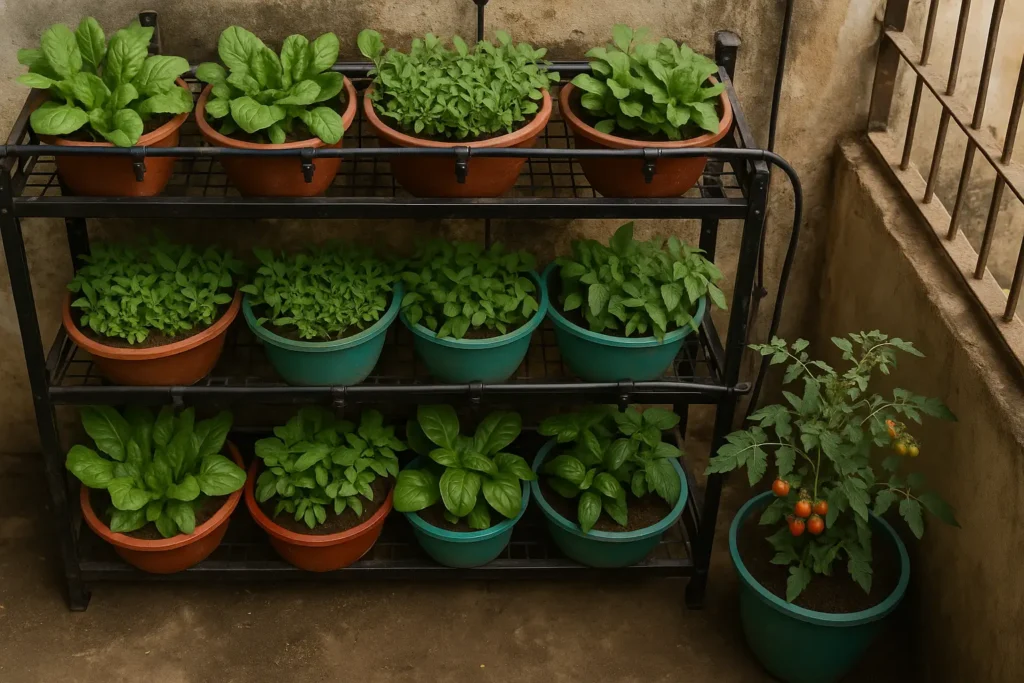
In the heart of Delhi’s concrete jungle, 58-year-old Mrs. Shalini Verma did something unthinkable. On her cramped third-floor balcony, just 6 feet wide, she began growing spinach, coriander, tomatoes, and even strawberries—not in the soil, but in vertical layers.
What started as an experiment during the lockdown slowly turned into a life-changing, nourishing habit. Her vertical garden not only cut grocery costs but brought her peace and purpose.
If you have ever stared at your apartment balcony, wondering how you can grow your own food without land, vertical farming at home might just be your answer.
If you are ready to take the next step, read our Step-by-Step Guide to Starting Vertical Farming for a detailed breakdown.
What is Vertical Farming?

Vertical farming is a method of growing plants in stacked layers—upward, not outward. Unlike traditional horizontal farming, vertical growing uses vertical racks, wall-mounted planters, or tower systems to grow more in less space.
This technique maximizes space, making it ideal for small homes, urban apartments, or terraces.
Key Features:
- Grows crops in limited areas, like balconies or rooftops.
- Often uses containers, grow bags, or hydroponic towers.
- Allows indoor vertical farming at home using artificial lighting.
- Use soil or soilless mediums (like cocopeat or hydroponics)
- You can easily use organic or natural inputs.
Scientific Source: NITI Aayog Report on Urban Farming (2021)
Why Vertical Farming is Perfect for Indian Homes (Even Small Balconies)
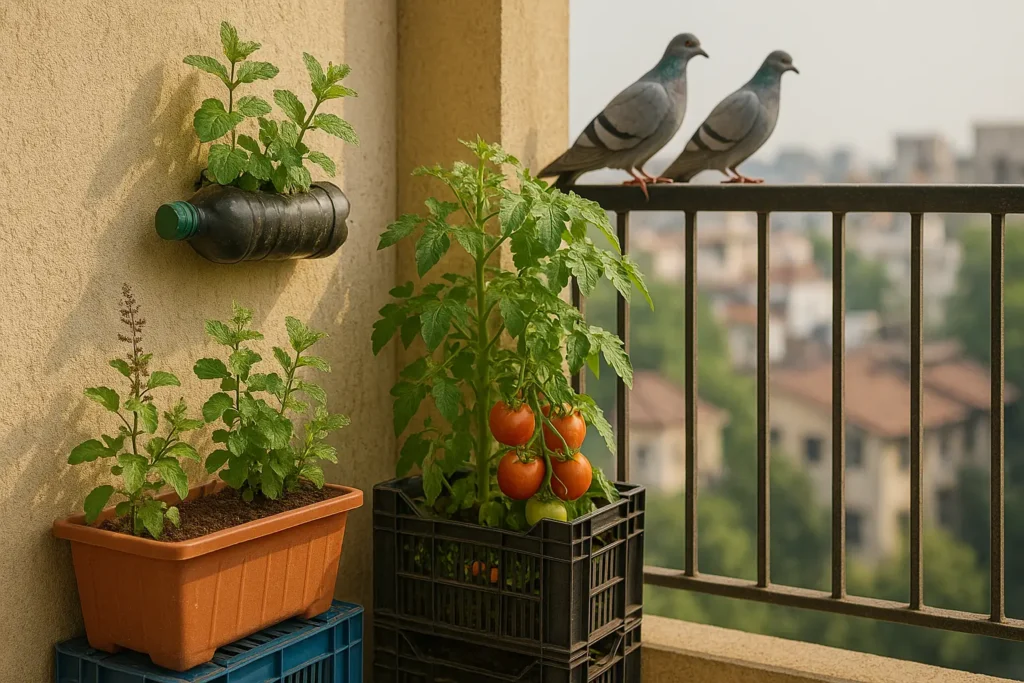
Let’s face it: urban Indian homes do not offer much open space. Most of us have a small balcony or a narrow terrace, yet our desire to grow our own food is strong—especially with rising food costs and pesticide concerns.
But they often have:
- A balcony with some sunlight
- An unused terrace corner
- Even windowsills with railing space
Here’s why Indoor vertical farming works brilliantly in these setups:
Benefits for Indian Households:
- Space-saving: You can grow 3x more in vertical racks than on the floor. You can stack plants vertically—3 to 6 levels in a rack system. This means even a 4×2 feet balcony can host up to 20+ plants.
- Water-efficient: Uses 70–90% less water than traditional methods.
- Low-maintenance: Weekly compost and bi-weekly watering are enough. You don’t need fancy equipment. A metal rack, some grow bags, and homemade compost are enough to get started.
- Organic and Healthy: Grow your own dhaniya, methi, palak, and tomatoes organically. Home-grown veggies mean no harmful sprays, no chemicals—just pure nutrition.
- Emotionally Fulfilling: Tending to plants daily is therapeutic. Many beginners say it reduced stress and improved mental health.
ICAR Research Note: According to ICAR-IARI, vertical farming in peri-urban spaces has improved food security and household nutrition by 30% in trials conducted in Delhi-NCR (Source: https://iari.res.in).
Basic Setup: Racks, Lights, Organic Pots
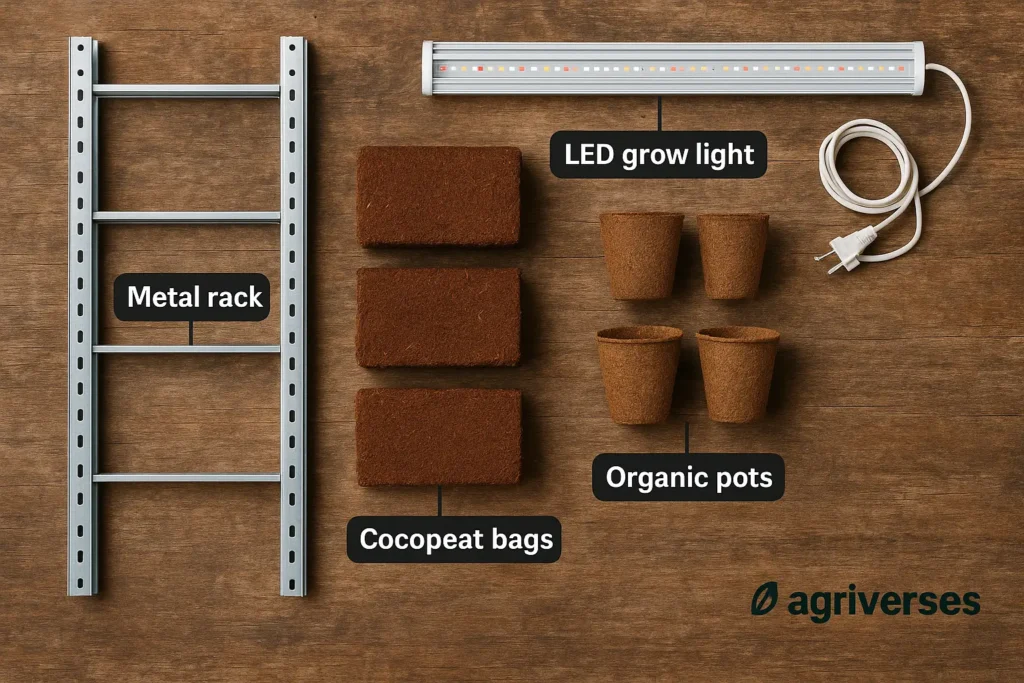
Starting small? Here’s what you need for your first vertical farming at home setup:
Tools & Materials:
| Item | Description | Cost (Approx.) |
|---|---|---|
| Vertical Rack | 3–5 layer plastic/metal shelf | ₹800–₹2000 |
| Grow Bags or Pots | Cloth or plastic, 5–10 inch | ₹30–₹100 each |
| Organic Potting Mix | Cocopeat + vermicompost + garden soil | ₹300 for 10 kg |
| LED Grow Lights | Optional for low-light homes | ₹500–₹1500 |
| Drip Kit (Optional) | DIY or store-bought | ₹300–₹800 |
Tips:
- Choose south-facing balconies for max sunlight.
- Use food-grade plastic or ceramic pots to avoid leaching toxins.
- Add a drain tray to catch excess water.
Organic Inputs for Home Use
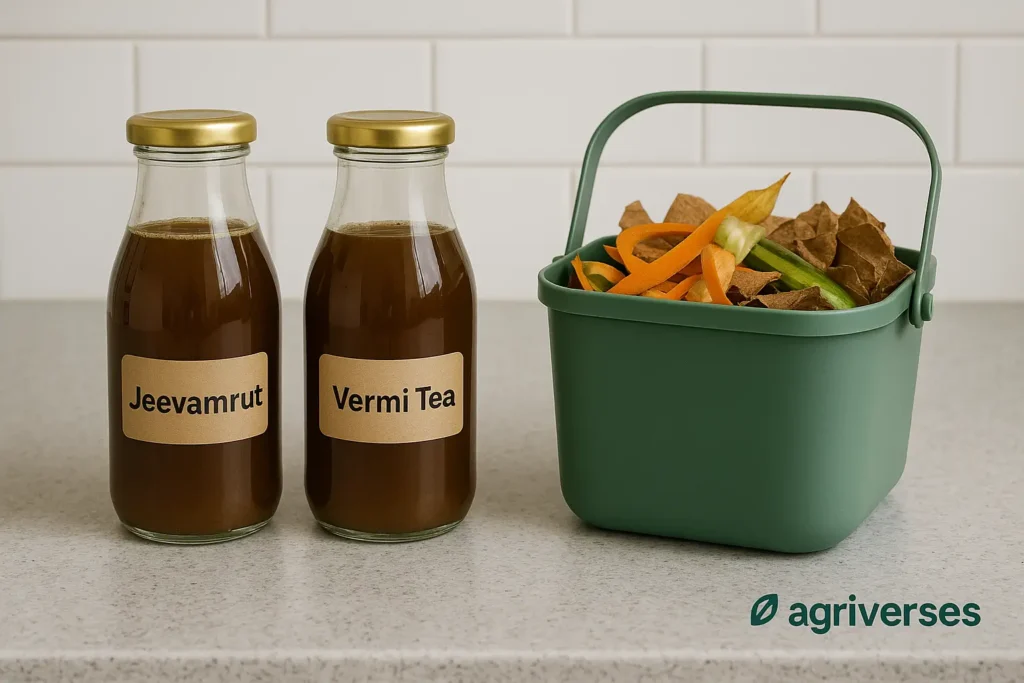
Once your setup is ready, don’t rush to buy chemical fertilizers. Go desi. Use homemade inputs that are safe, sustainable, and effective.
DIY Compost:
Convert kitchen waste (peels, leftover food, tea leaves) into black gold.
How To:
- Use a bucket with a lid and holes at the bottom.
- Add waste + dry leaves/paper + a bit of cow dung.
- Stir every 3 days. Compost is ready in 25–30 days. And stir weekly.
Liquid Organic Fertilizers:
- Jeevamrut:
It helps to improves soil microbes, Promote root growth and use once every 10 days.
- Mix cow dung (10 kg), cow urine (10 L), jaggery (500 g), besan (1 kg), and water (50 L).
- Ferment for 5–7 days.
- Use 1:10 ratio to water plants.
- Vermi Tea:
- Soak 1 kg vermicompost in 10 L water(1:5), Let it sit for 24 hours.
- Use it as a foliar spray or soil drench.
- These liquid fertilizers are especially helpful in indoor vertical farming at home, where nutrient leaching is minimal.
Curious how people do this in city apartments and rooftops? Check out Vertical Urban Farming in India.
Which Crops Are Best for Vertical Farming ?
Vertical farming is revolutionizing how we grow food in limited spaces. Whether you live in a city apartment or have a small balcony or terrace, the vertical approach allows you to maximize yield with minimal ground area.
Choosing the right crops is crucial for success. Here’s a breakdown of the most suitable plants based on their growth habits, maintenance needs, and productivity in vertical systems.
1. Fast-Growing Crops
For those seeking quick harvests, leafy greens like spinach (palak), coriander (dhaniya), and methi (fenugreek) are top performers in vertical farming.
These crops are not only nutrient-dense but also thrive in containers and stacked grow systems.
- Spinach: This cool-season leafy green matures in 25–30 days and can be grown in vertical racks with shallow containers. It prefers partial shade and consistent moisture.
- Coriander: Fast to sprout and ready for harvest within 3–4 weeks, coriander grows best in moist, well-drained soil. It also benefits from regular pruning, which promotes bushy growth.
- Methi (Fenugreek): A hardy plant that requires minimal care. It can be harvested as microgreens in 15 days or allowed to mature for a more robust leaf crop. Best grown in vertical trays with 4–6 inches depth.
2. Herbs for Daily Use
Kitchen herbs are ideal for vertical gardens due to their compact size and daily utility. Mint, tulsi (holy basil), curry leaves, and basil are among the most practical options.
- Mint (Pudina): Thrives in shallow containers and grows quickly from stem cuttings. Needs frequent trimming to prevent overgrowth and promote new shoots.
- Tulsi: An essential medicinal and spiritual plant, tulsi grows well in moderate sunlight and prefers slightly dry soil between waterings.
- Curry Leaves: While slower to establish, curry leaf plants can adapt to vertical tower systems with deeper planters. Requires direct sunlight and occasional pruning.
- Basil: Known for its strong aroma and flavor, basil thrives in warm temperatures. Pinching off flowers encourages longer leaf production.
3. Mini Fruits
Miniature fruiting plants like cherry tomatoes and strawberries are perfect for vertical gardens due to their trailing growth and manageable size.
- Cherry Tomatoes: These compact tomato varieties need at least 6 hours of direct sun and a vertical support system like trellises or netting. Choose dwarf or bush types for best results in vertical setups.
- Strawberries: Perfect for hanging baskets or tiered planters. Strawberries grow well in slightly acidic soil and need good drainage. Regular removal of runners helps focus energy on fruiting.
4. Kitchen Essentials
Every home garden should include daily-use crops like chillies, lemongrass, and spring onions. These staples are easy to grow and offer great returns.
- Chillies: Compact chilli plants adapt well to grow bags or pots in vertical frames. They need full sun, moderate watering, and organic fertilization every few weeks.
- Lemongrass: A fragrant and mosquito-repelling herb, lemongrass requires a larger pot and ample sunlight. It grows tall, so position it at the top or side of your vertical unit.
- Spring Onions: Regrow easily from kitchen scraps and thrive in narrow vertical troughs. They require minimal space and are ready to harvest in just 4–5 weeks.
By choosing crops suited for vertical farming, you not only utilize your space efficiently but also gain access to fresh, organic produce year-round. Focus on plants that match your light conditions, container depth, and culinary needs to get the most out of your setup.
Organic Gardening Troubleshooting Guide
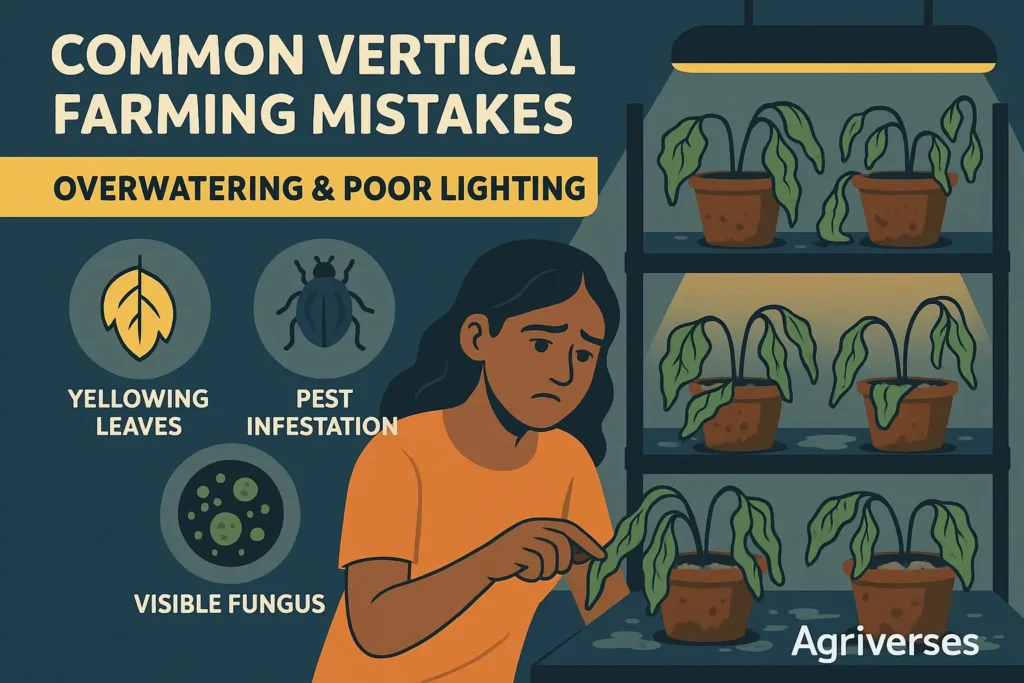
Gardening problems? Don’t worry, even the best organic farmers face them. Here’s a quick and easy guide to common plant issues and their natural solutions. Use this to troubleshoot your garden like a pro!
- Yellow Leaves?
If your plants are developing yellow leaves, the most likely reason is overwatering. Stick your finger about 2 inches deep into the soil. If it still feels moist, wait before watering again. Plants love consistency, not soggy roots. - Seeing Fungal Growth?
Fungal problems often come from poor airflow. If your plants are indoors or in a greenhouse, try opening a window or using a fan. Better air circulation keeps diseases at bay, especially in humid climates. - Plants Growing Too Tall and Weak (Leggy)?
This usually means your plants aren’t getting enough sunlight. Move them to a brighter spot or consider installing an LED grow light, especially if you’re growing indoors or during cloudy seasons. - Growth Seems Too Slow?
Slow plant growth could be a sign of poor soil nutrition. Re-energize your soil using homemade organic compost or a weekly dose of vermicompost tea. These natural fertilizers give your plants the boost they need without chemicals.
Real-Life Example: Balcony Vertical Garden in Delhi
Meet Rajeev Sharma, a 38-year-old IT employee living in Lajpat Nagar. Tired of pesticide-laced veggies, he started a 3-tier vertical farming rack in his balcony.
His Setup:
- Area: 6×3 ft
- Plants: Tomato, chilli, tulsi, methi, coriander
- Inputs: Homemade compost, neem spray, jeevamrut
- Light: Natural, 3–4 hours a day
- Cost: ₹1800 (initial)
Monthly Harvest:
- 2 kg tomato
- 500 gm methi
- Chilli for the whole month
- Fresh herbs every week
Rajeev says, “Every morning I pluck dhaniya with chai—it reconnects me to my village roots. Plus, my kids now love gardening too.”
Scientific Explanation of Vertical Farming
Vertical farming uses controlled-environment agriculture (CEA) to optimize plant growth.
It Optimize space, light, water, and nutrients in a controlled way. Instead of depending on nature entirely, you give each plant exactly what it needs—no more, no less.
It’s based on:
- Photosynthesis science: Natural or artificial light helps in sugar formation.
- Soil microbiology: Compost and Jeevamrut boost beneficial microbes. Soil Health is preserved as there’s less erosion and no harmful pesticide use.
- Water dynamics: Drip or misting systems reduce water wastage by up to 90%.
Studies from ICAR-IARI (Indian Agricultural Research Institute) show that vertical farming can increase yield per square foot by 3–5 times compared to traditional balcony gardening.
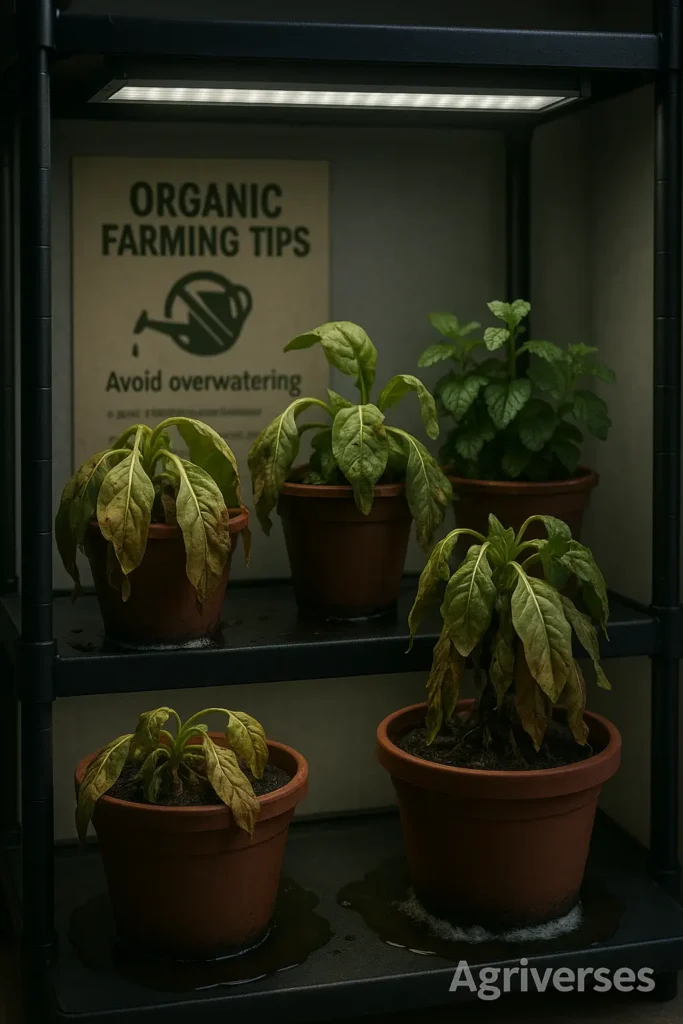
Reference: ICAR-CPRI Vertical Farming Note
Vertical Farming vs Traditional Balcony Gardening
| Space Efficiency | Limited (horizontal) | High (stacked layers) |
|---|---|---|
| Water Usage | Higher | Lower with drip/mist |
| Organic Input Use | Medium | High (DIY-based) |
| Sunlight Dependency | High | Moderate (LEDs optional) |
| Yield per sq. ft | Low | 2x–5x Higher |
Conclusion: Your Desi Balcony Can Feed Your Family
You do not need acres of land, fancy gadgets, or a massive terrace. All you need is a little space, some curiosity, and the will to start. Whether you’re a farmer living in the city, a homemaker looking to cut down sabzi bills, or a student missing your gaon ki mitti—vertical farming at home brings agriculture back to your daily life.
It is not just about food. It is therapy. It’s self-reliance. And most importantly—it’s possible.
Ready to start your own vertical farm at home?
Comment below with your questions, or share this guide with someone who needs to start today!
common FAQs
Can I do Vertical farming without sunlight?
Yes! Use LED grow lights. A 20W full-spectrum LED placed 15 cm above plants works well in indoors.
What’s the monthly cost?
If you use homemade compost and jeevamrut:
Inputs: ₹0–₹100/month
Water: Minimal
Electricity (if LED used): ₹30–₹100How much space is enough?
Even 3×2 ft is enough for basic herbs and leafy greens. A 5-tier rack can hold 15–20 pots.
What can I grow in vertical farming at home?
Herbs: Tulsi, dhaniya, pudina
Greens: Palak, methi, lettuce
Vegetables: Tomato, chilli, okra (in bigger containers)
Microgreens: Mung, mustard, wheatgrass


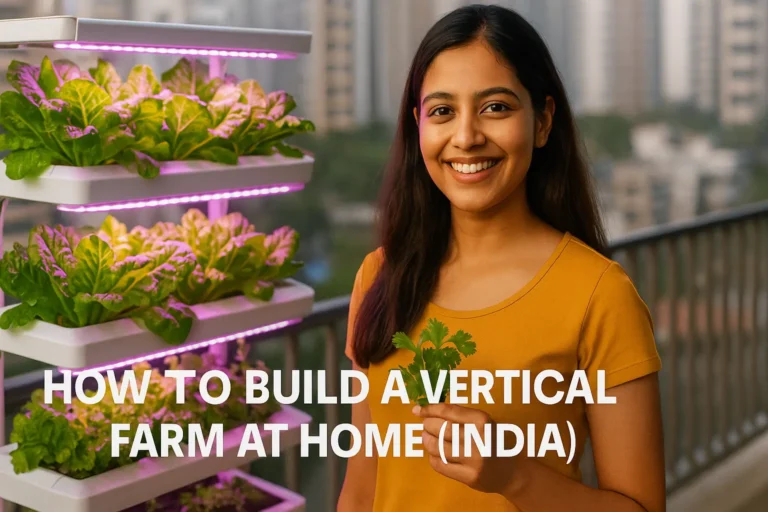




4 Comments